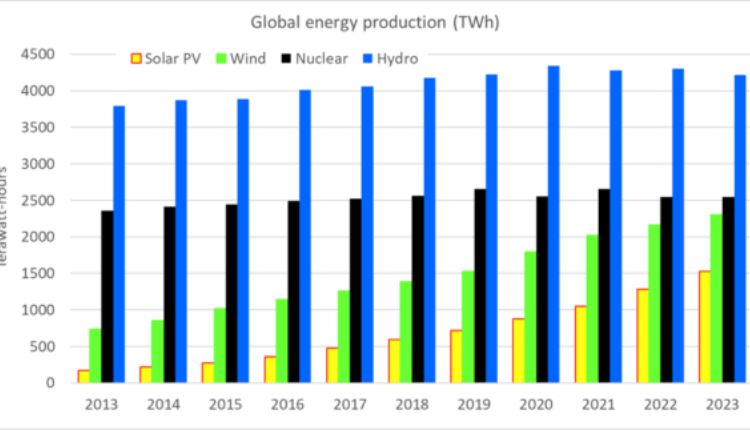As global solar power generation has increased ninefold over the past decade, reaching 1,500 terawatt-hours (TWh) annually, the PV cable market is experiencing unprecedented growth opportunities. With an annual compound growth rate of 22%, solar power generation is expected to reach 100,000 TWh per year by 2042, sufficient to achieve a fully decarbonized global economy.
Rapid Growth of Solar Power Generation
The rapid rise of solar power in the global energy mix is particularly notable. Despite having a relatively low capacity factor of 12% to 25%, solar power has become dominant in power plant construction. It is projected to surpass nuclear power by 2026, wind power by 2027, hydro power by 2028, natural gas by 2030, and coal by 2032. Given current trends, coal, natural gas, and nuclear energy might disappear entirely by mid-century, with global energy production relying primarily on solar and wind power.
The Rise of thePV Cable Market
Photovoltaic cables, as critical components connecting solar panels to the grid, have seen their demand soar with the increasing installed capacity of solar power. PV cables must offer excellent conductivity, high temperature resistance, UV protection, and corrosion resistance to ensure long-term stable operation. In this context, the global solar cable market is rapidly expanding, with major manufacturers increasing their research and development investments to meet the growing market demand.
For instance, Chinese PV cable manufacturer KUKA CABLE recently introduced the “SIF” quality control model for PV cables, adopting stricter design standards aimed at providing higher-standard and more durable transmission products for PV systems. While the EU’s EN50618 standard is widely adopted for solar DC cables, KUKA CABLE’s SIF quality control model exceeds EN50618 in key indicators. By innovating with new materials and optimizing production processes, KUKA CABLE has significantly improved performance parameters, focusing on 18 major and 25 minor key indicators that directly impact the electrical performance and weather resistance of cables.
Policy Support and Technological Innovation
The rapid development of the solar industry is closely linked to government policy support and technological innovation. Many countries encourage solar projects by developing renewable energy plans, providing financial subsidies, and offering tax incentives. Technological innovation is also crucial in driving the solar industry’s growth. PV cable manufacturers continuously develop new materials and technologies to enhance cable performance and reliability, meeting market demands.
Future Outlook
With the global demand for clean energy continually increasing, the PV cable market has a promising future. Over the next few years, PV cable technology is expected to further innovate, and production costs will continue to decline, accelerating the implementation of solar projects in more countries. As global solar power generation continues to rise, the PV cable industry will play a key role in the worldwide energy transition.












